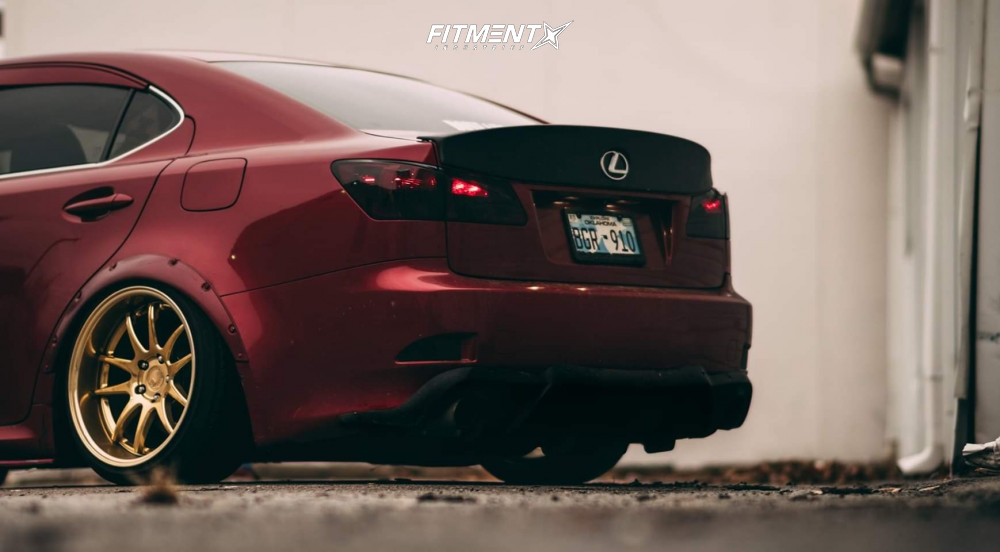Rookie Mistakes When Adjusting Coilovers
September 10, 2021
So you just bought yourself a fancy new set of coilovers. You're one of the cool kids now! You're ready to throw those bad boys on and slam your car to the ground. What if we told you, there's a proper way to adjust your coilovers? Crazy.
Well, it's true and today we're going to tell you the most common rookie mistakes when adjusting coilovers!
Quick Links:

1. Removing the Coilover
The first thing when it comes to dialing your suspension, or more importantly when you're trying to slam it, is not taking the Coilover out of the car to adjust it.
This commonly happens with adjusting ride height because let's be real, who wants to take an entire coilover out, lower it, and have proper techniques and processes? Haven't you gone to college? Pfft. Procrastination is the key to success.
Now, in all honesty, you should actually take them out to use the lower threaded body of the coilover to adjust the height of the car. Using much else isn't usually a good idea.
Threaded lower bodies won't come on all Coilover options though so you're gonna wanna make sure you keep that in mind, which leads us into number two.
2. Using the Locking Collar for Adjustment
The second rookie mistake people always seem to make when they're adjusting their coilovers is using their locking collar on their coilovers as a height adjustment tool.

This is where it gets a little bit confusing. In short, using the locking collar as a height adjustment is not really what you're supposed to do unless you're a special Sammy with a special Coilover and that doesn't come with a lower threaded body.
Which case we're gonna get into linear and progressive rate springs here shortly. However, try to stay away from the collar if you have progressive springs, and lower threaded bodies.
Pro Tip:
A myth about locking collars is how it messes with preload and then how that preload affects your spring rate, and how that overall affects handling.
The simple answer is no. Preload won't make the spring any more or any less stiff depending on the type of spring that you have. Most of the time you're gonna have linear.
So, it does depend on the type of spring you're talking about whether that's a linear rate or progressive but most of the coilovers that you're gonna be looking at are linear rate, which means the stiffness won't change no matter how far they're compressed.
while you can use the locking collar to adjust ride height minutely, on a linear spring rate, you don't really wanna do that if your Coilover has other, more purposeful adjustments meant specifically for overall height.
3. Not Using the Adjustment Features
Another common rookie mistake when adjusting coilovers is not actually using the adjustment features that coilovers are built with to help you to dial them in.

Listen, coilovers have some cool features.
They got knobs, turntables, dials, twisty boys, but if you don't use the things that are supposed to help you dial in your fitment, then you might as well just come to FI and slap Dakota in the face because that's essentially what you're doing when you don't take advantage of those features.

Breaking down all the fun little features of a coilover, you have things like your adjustable dampers, which control the sensitivity in response to the overall suspension movement through the passing of hydraulic fluid.
You also have features to adjust compression, rebound, or both depending on what coilovers you invest in. This can sometimes get expensive, but there are a lot of really solid coilvers from companies like BC that still offer important adjustments.

Your adjustable spring load allows you to change how much compression is needed to get the spring to travel depending on the type of coilover you have.

Then you actually have your threaded bodies for your overall height. When you're dialing in fitment, it's important to use those tools and not just slam your to the ground, even if you really want to.
This is because, although it'll look proper right off the bat, you may find yourself crying, slowly, on the highway as you try to figure out why your car oddly rubs at 42 miles an hour, or when a leaf makes its way underneath your car and now your car is leaking oil.
Dialing in coilovers allows you to make your car look absolutely gorgeous without sacrificing driveability. However, if you don't use the dialing-in tools and rush things, it's gonna look good but perform horribly.
And this doesn't always have to be difficult. The problem is most of us get insanely impatient since it requires constant tweaking.
Coilovers are basically the same when it comes to that standard functions. It just depends on your use of them; whether it's for the track or for the show, dialing in your coilovers always changes the way your car functions.
Pro Tip:
Those threads will either become your best friend or your absolute worse enemy.
When adjusting your coilovers you're going to want to make sure that you're throwing some anti-seize on those moving parts, especially if the car is driven in inclement weather.
It helps a ton when you play around with adjusting your lower body or collar since the pieces themselves, like metal on metal, and cold and warm, over time can deteriorate.
Adjusting coilovers is the number one reason that people actually buy them. The same reason multi-piece wheels exist. To dial in your wheels exactly how you want them.
But when you aren't using your coilovers for that reason and you spent $2,000 on them, then you actually not doing anything besides lowering em, and then you're gonna have rookie fitment.

Once you've gone through and dialed in your fitment, torque to spec your camber plates and control arms, and you finally think you have it seated properly don't forget that you need to account for suspension rest.

The suspension will rest anywhere from 5 to 10 millimeters after you've swapped to coilovers and a few millimeters more just within dialing in your fitment depending on what you're doing to it.
If you put different wheels and tires on it's gonna change if you end up adjusting your coilovers again. If you go smack hard with perfect fitment the first time around you'll end up smashing your wheel/tire, into your fender.

We hope these pro tips save you some bloody knuckles and prevent tools from flying across the garage. Have patience and don't make these rookies mistakes and you'll be killin' it!

Did you know we offer financing options for your build? It doesn't matter if you're just picking up a new set of wheels or creating a whole wheel and tire package along with a suspension kit. Instead of shelling out a ton of money at once, you can break that total into low monthly payments.
You could finish your build for less than you spend in gas each month!
You don't need to have a perfect credit score to finance your build or even a credit score at all! Just select a lender at checkout to get started!
On top of that, you could get as low as 0% APR and even pay off your balance early with no penalty. Put some more money in your pocket and get that build finished!



















